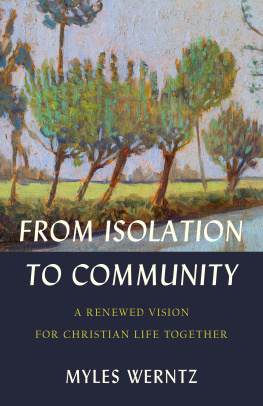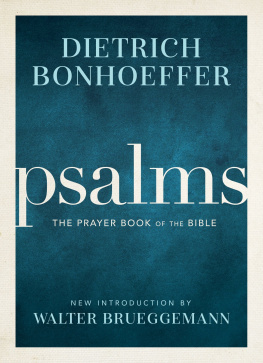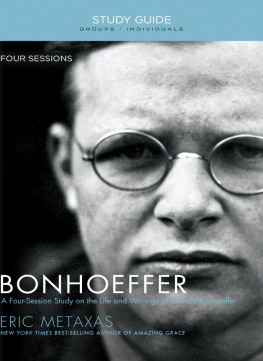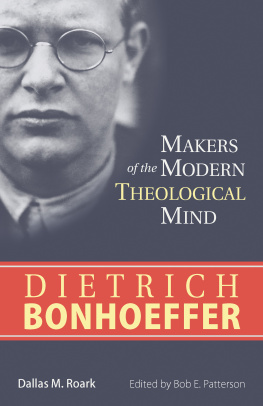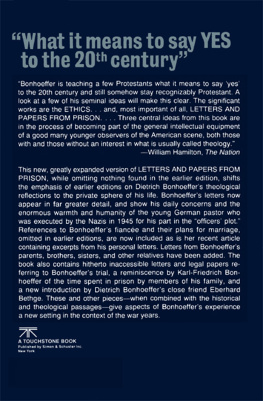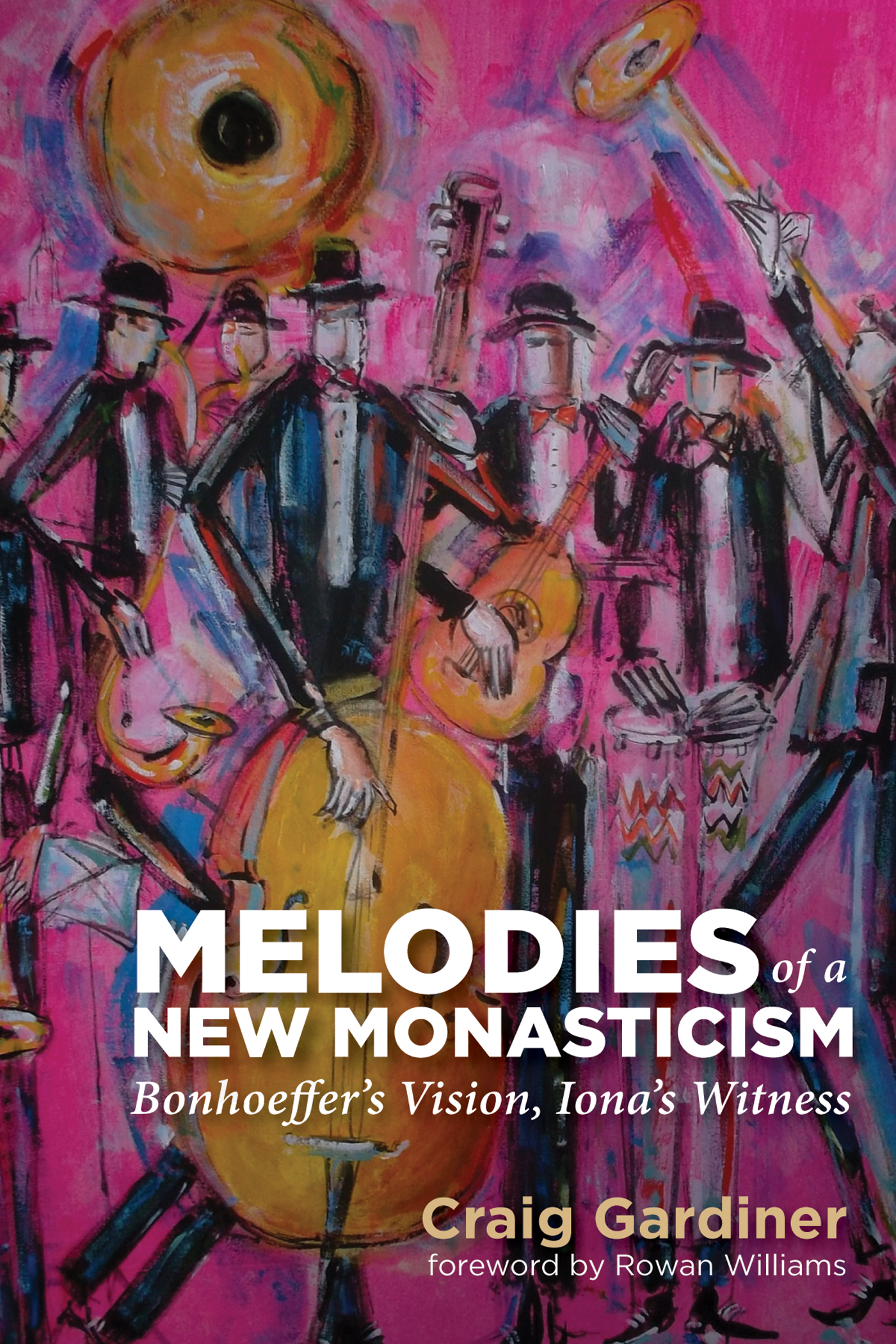Out of silence, a voice speaks.
Its saying...
I listen, and I hear it, endlessly repeated...
dont be afraid. Beyond the judgements of the world,
you are precious. You need no value addition.
I am for you.
I begin to hear differently. The faint refrain becomes a
This is the music of the kingdom.
And I dont mind that many will go in before me.
the bottom line.
And my soul will sing.
. Galloway, The Workers in the Vineyard, in Talking to the Bones, . Used with the kind permission of the author.
Permissions
Acknowledgment is gratefully extended for permission to reproduce extracts from the following:
John L. Bell, States of Bliss and Yearning: The Marks and Means of Authentic Christian Spirituality (Glasgow: Wild Goose, 1998 ).
John L. Bell and Graham Maule, Heaven Shall Not Wait, in Heaven Shall Not Wait: Songs of Creation, The Incarnation, and The Life of Jesus, (Glasgow: Wild Goose, 1994 ). 1987 The Iona Community.
Ian Cowie, Prayers and Ideas for Healing Services (Glasgow: Wild Goose, 1995 ).
David S. Cunningham, These Three Are One: The Practice of Trinitarian Theology (Oxford: Blackwell, 1998 ). David S. Cunningham 1998 .
Ronald Ferguson, Chasing the Wild Goose: The Story of the Iona Community (Glasgow: Wild Goose, 1988 ).
Ron Ferguson, Daily Readings with George MacLeod (Glasgow: Wild Goose, 2001) .
Ron Ferguson, George MacLeod: Founder of the Iona Community (Glasgow: Wild Goose, 2001 ).
Stanley Hauerwas and William Willimon, Resident Aliens: Life in the Christian Colony (Nashville: Abingdon, 1989 ).
Iona Abbey Worship Book (Glasgow: Wild Goose, 2001 ).
Martyn Joseph, Liner Notes from Till the End: For the MST (Christian Aid/Pipe Records, 2002 ).
Fred Kaan, The Church is Like a Table. 1989 Hope Publishing Company, Carol Stream, IL 60188. All rights reserved. Used by permission.
George F. MacLeod, Man is Made to Rise, and A Temple Not Made with Hands, in The Whole Earth Shall Cry Glory: Iona Prayers by Rev. George F. MacLeod (Glasgow: Wild Goose, 1985 ).
Peter Millar, An Iona Prayer Book (Norwich: Canterbury, 1998 ).
Michael OSiadhail, That in the End, in Our Double Time (Newcastle upon Tyne: Bloodaxe, 1998 ).
Adrienne Rich, Natural Resources, in The Dream of a Common Language: Poems 1974 1977 ( New York: Norton, 1978) .
Frances Young, T he Art of Performance: Towards a Theology of Holy Scripture (London: Darton, Longman and Todd, 1990 ).
Bible quotations, unless otherwise noted, are from the New Revised Standard Version of the Bible, 1989 by the Division of Christian Education of the National Council of the Churches of Christ in the USA.
Foreword
T his is a work of outstanding originality, a hugely fresh and far-reaching essay on Christian community drawing on both ancient and modern Christian sources. It takes two iconic twentieth-century figures who have transformed the theology and practice of life in communityGeorge MacLeod of Iona and Dietrich Bonhoefferand relates them both to the major themes of Christian theological thinking and to the history and vision of classical monasticism.
But it does a good deal more besides. It takes a single metaphor, that of polyphony , as the essential character of Christian community, and develops it with elegance and boldness. Gardiner is not content with a general appeal to polyphony as a model of unity-in-difference, but explores the crucial question of what actively unifies a diverse process, and comes up with a full exposition in terms of seeing Christ as the cantus firmus underlying and tying together the diversity. On this basis, he develops two parallel threefold structures for thinking about the Christian community as it expresses its identity in relation to God and the worldworship, ecumenism, and healing alongside peace, justice, and ecological responsibility. In each of these, the church is completely itself, singing its primary cantus firmus , but weaving interconnecting patterns around it in a differentiated unity.
It is a work that passes fluently and helpfully between the two poles of biographical and historical exposition on the one hand and direct doctrinal exploration on the other. As regards the former, Gardiner elaborates a comparison between Dietrich Bonhoeffer and George MacLeod that illuminates both men and draws out a theme in twentieth-century Christianity that has not been sufficiently dealt with. He shows how both grow from the soil of a dynasty, academic or ecclesiastical, from different kinds of aristocracy, and then how both are challenged by exposure to the majority experience of their generationwar, mass privation, the secularity of the environmentand outgrow their inherited Protestant conventions without abandoning the central passions of the Reformation. Finally, he demonstrates how both find in the re-creation of a sort of monasticism an effective response to the modern crisis of religious credibility. All of this is argued with enthusiasm and vividness, and the reflection on what the monastic witness really means and might mean is appropriately challenging.
Both the writing and the practice of these two iconic figures then leads into a constructive exposition of the nature of the church and its contemporary vocation, using the same focal musical metaphor. In a way, what emerges is a very fully worked theological grounding for the view of the church that might be taken as basic for the Iona Communityand similar contemporary attempts to reimagine the church outside both narrowly local and narrowly hierarchical structures. The whole discussion is really a meditation on the fundamental integrity of the church, which is what every serious study of spirituality should be.
The contemporary pertinence of this work should be clear. Bonhoeffer, as we have been reminded a good deal in recent years, is someone whose disturbing legacy has yet to be really digested by the church. MacLeod stands at the origins of one of the most effective and credible Christian communities in the English speaking world. Neither of them can easily be pigeonholed in the terms of current conservative-liberal polarities. And the theology that emerges from this, as Gardiner states it, is itself something that transcends these glib oppositions. If it is true that we urgently need theological work that gets us out of the traps of ecclesiastical politicsand if it is also true that we need a few modern Church Fathers to look to as sources and touchstones of a rediscovered classical balancethis book offers something of quite exceptional importance and timeliness to the church overall. It defines a theological spirituality that is disciplined, imaginative, and engaged, that balances contemplation and action, and that shapes not just the life of an enclosed elite but the whole vision of the Christian community in its specific modern setting, a community promising and manifesting transformation.
So this is not an abstract essay. Both in style and in subject matter, it is as engaged as its two heroes are. It succeeds in being thoroughly well-resourced academically while never losing accessibility. It was, for me personally, a privilege to be involved in supervising some of the research that led to this book, and I am confident that Craig Gardiner is someone who will make a serious mark as a theologian of an unusual kind. He occupies the sort of territory currently inhabited by a Stanley Hauerwas or a Walter Brueggemannsomeone with ample scholarly credentials but able to speak directly into the most pressing concerns of the contemporary church and its ambient society. It is an exhilarating study, whose richness will serve the sharing of the gospel and the vision of the Kingdom in all kinds of ways. I am delighted to see it in print.



